Maple Leafs can retool their way to the Stanley Cup by being bold
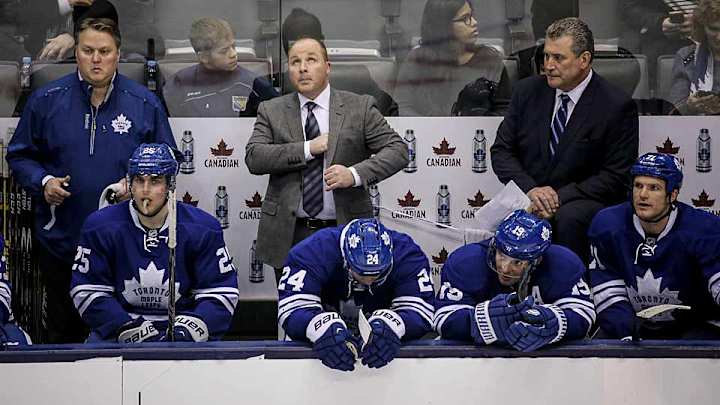
Here’s an easy one: Should the Maple Leafs rebuild or retool? As long as most of the teams in the NHL don’t know their left from their right, no, Toronto should not rebuild.
In any league there are universal assumptions (that advanced statistics will eventually expose as wrong) that cause all GMs to believe that certain good players are bad and that certain bad players are good. The first team to figure this out—and to figure out the truth about the players in question—gets an outrageous advantage. The A’s, as documented in Moneyball, got it in MLB. The Leafs can be this team in the NHL.
Toronto trades D Franson, F Santorelli to Nashville for draft pick, forwards
Here’s what statheads know to be true about Toronto: The Maple Leafs have a pair of one-dimensional stars in Dion Phaneuf and Phil Kessel. They have a nice collection of young players in Jake Gardiner, Nazem Kadri and Morgan Rielly. The rest is a mixed bag of decent players making too much money (Tyler Bozak, David Clarkson), good players about to cash in elsewhere (Daniel Winnik and the recently traded pair of Mike Santorelli and Cody Franson—more on this situation in a bit) and marginal defensemen (Roman Polak, Stephane Robidas).
The question now seems to be whether they should trade players out of those first two categories (rebuild) or just focus on reshuffling the rest of the roster (retool). That these options seem equally attractive is mostly a semantic failing. Both words, loosely synonyms, paint the picture too rosy. They both suggest guaranteed renewal for something already badly damaged. But to rebuild in sports almost always means having caused the damage first.
So consider a more honest phrasing: Should the Leafs trade their big-money stars and up-and-comers for futures?
Toronto doesn’t need to accept that kind of risk. Given the incremental progress of hockey’s analytics revolution, and the brain trust that the team has assembled, the Maple Leafs have the chance—rare in the salary cap era—to retool instead of rebuild. They need better complementary players to help their already capable stars. And in a league that is just starting to accept advanced stats, the teams ahead of the curve in accepting analytics will almost always get the best complementary players. For proof, look no further than Santorelli and Winnik, under-the-radar stat-approved signings that turned out to be hot commodities in advance of this year’s trade deadline.
When I was growing up, there hung a sign in my dentist’s office that read, “Teenagers, tired of being harassed by your parents? Act now! Move out, get a job, pay your own way while you still know everything!” Stripped of its corny sarcasm, this is exactly my advice to Toronto.
Most hockey people treat the analytics movement like a curious new facet of the game, some new tool worth investigating. Their focus is on slowly and carefully integrating this new information into their existing scouting process. And one day this attitude will reap benefits, as it does now in baseball: Teams will use statistics and scouting in concert until real-time tracking stats makes the line between the two blur beyond recognition.
But in the meantime, to be perfectly frank, there are going to be some suckers out there who can ripped off by an organization that’s willing to go all in on statistics. Some people might not like it, but the rewards will be great.
Look for more multiplayer trades as NHL deadline approaches
For one thing, good advanced stats are not right around the bend; they’re already here. While it’s debatable whether or not real-time statistics will yield anything ground-breaking, they certainly won’t replace Corsi. The pitching stat FIP (Fielding Independent Pitching) functions much the same way possession stats do in hockey: It’s a simple estimator for a complex phenomenon, one that excludes luck. For many years, some very smart people tried to replace FIP, and failed. Corsi may lose some battles—there will be Matt Cain-type players who defy their underlying numbers and necessitate a deeper analysis to determine their quality. But Corsi and its fundamental usefulness will endure.
Knowing this, the Leafs can fix their team simply by keeping their good players and getting rid of their bad ones. While that sounds incredibly reductive, realize that this simple solution was the true genius of Oakland general manager Billy Beane, a guy who faced much longer odds than Toronto.
Beane, with the same understanding of statistics of any reasonably conversant Baseball Prospectus reader, merely had the audacity to call a spade a spade. He acquired the players the statistics said were good, sold high on the ones the statistics said were bad and gave his manager no choice but to play them.
It doesn’t take much imagination to envision a similar Moneyball-type scenario in hockey. Just look at the NHL’s two most-improved powerhouses in 2014–15: the Predators and the Islanders.
Nashville GM David Poile gradually shed his defenseman who had good defensive reputations, but were also abysmal Corsi players—including Kevin Klein and Hal Gill—and promoted Ryan Ellis and Mattias Ekholm to be big-minute defensemen. Onlookers have hailed the breakout play of the two blueliners, along with the emergence of forwards Colin Wilson and Filip Forsberg, as big reasons for the Preds’ success, but the statistics tell a different story. All four players have always been fundamentally good. Their counting stats were just lower because of a lack of ice time.
Eye Test: Cody Franson's game is ugly, but his pretty stats don't lie
The Maple Leafs have two similarly skilled and underused players in Morgan Rielly and Jake Gardiner. If they want to trade Dion Phaneuf, they shouldn’t do it for a “culture change,” or for the easy symbolism of dumping their captain. They should do it because they want to invest the money that they’re currently paying Phaneuf into giving more playing time to Rielly and Gardine.
On Long Island, GM Garth Snow certainly faced the temptation to ship out established stars when his rebuild stalled last season. But he hung onto Kyle Okposo (and players like him), and chose instead to round up a veritable Who’s Who of underrated statistical darlings, including Nick Leddy, Mikhail Grabovski and Jaroslav Halak. Do Toronto fans need to be reminded that Tyler Bozak is still among their team’s top-six forwards years after the Leafs chose him over Grabovski?
Granted, Poile and Snow may not have been acting on any specific statistical knowledge, though both front offices have good analytics staffs. That makes Toronto’s opportunity even greater. Presuming that Leafs GM Dave Nonis is a goner, team president Brendan Shanahan and his cadre of numbers-crunchers can act aggressively to add value to a team that already features a solid core.
They just need to do the things make the Corsi number go up—I swear it's that simple. Replace the fourth line (OK, maybe Clarkson isn't going anywhere) with the three best non-prospect forwards in the Swedish league. Don’t carry any defenseman that wouldn’t be called too-soft puck-movers by the yahoos on talk radio. This year, Polak leads Toronto’s defensemen in time on ice and Bozak leads the centers. Next year, the TOI leaders should be Rielly and Kadri, while Polak and Bozak are drawing paychecks from the Canucks. Hire Mike Babcock to coach—or keep Peter Horachek.
In a just world, the Maple Leafs would have a $160 million payroll. There exists, in a system that rewards mediocrity and punishes great hockey towns, the temptation to just play the game, to pawn off Kessel’s contract and use the savings to make Connor McDavid jerseys.
But in ten years, when the widespread acceptance of statistics will make the evaluation of established talent a wash, the only true currency in this league will be the superstars. You need the nerds when the rest of the league is still scouting, and the scouts when the nerds have taken over. Take it from a fan of the Mets, Toronto’s MLB analog—they came too late to the analytics trend and got things exactly backwards.
After all, Kessel doesn’t need McDavid centering him to win a Cup with the Maple Leafs. He just needs someone better than Bozak. And presumably Toronto finally realizes that.
GALLERY: Great Blunt Remarks By NHL Coaches
Great Blunt Remarks By NHL Coaches
Peter Horachek
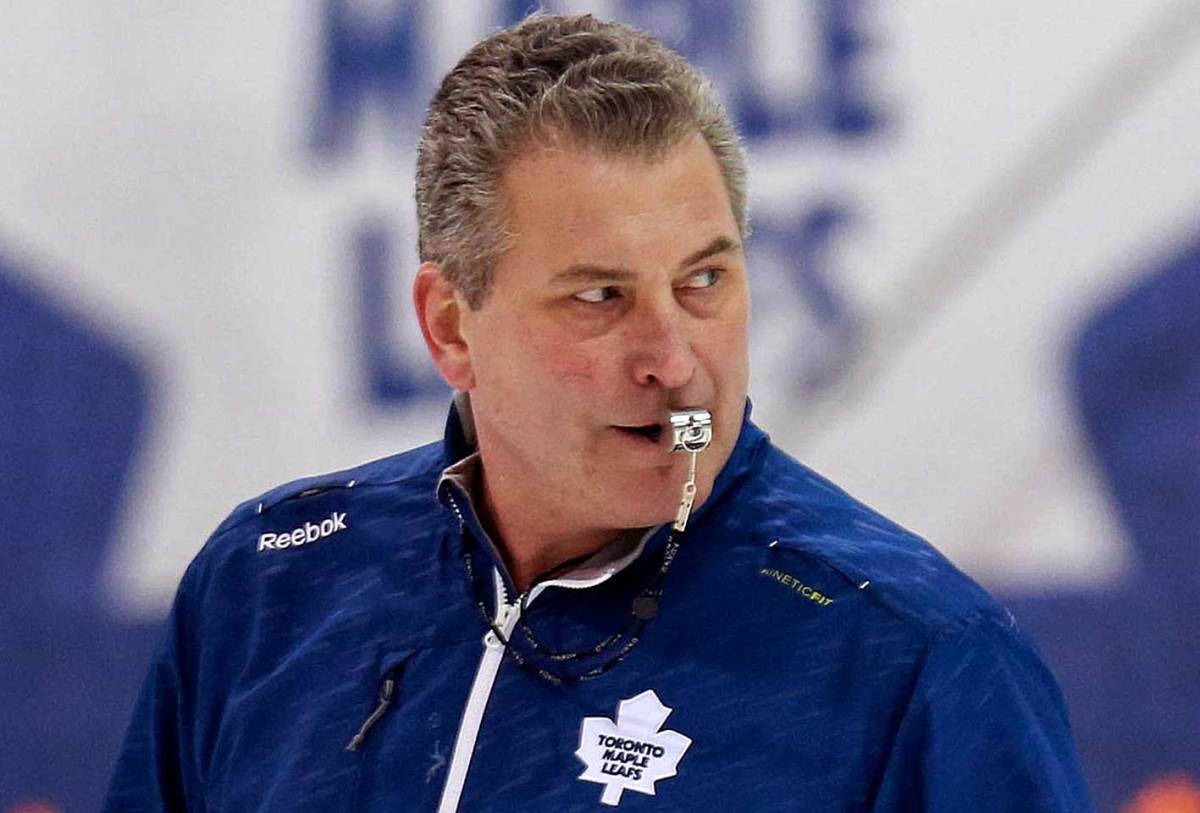
“The whole give-a-s--- meter has to be higher,”—after his slumping, lethargic Maple Leafs lost 5–4 to the Rangers on Feb. 10, 2015.
John Tortorella
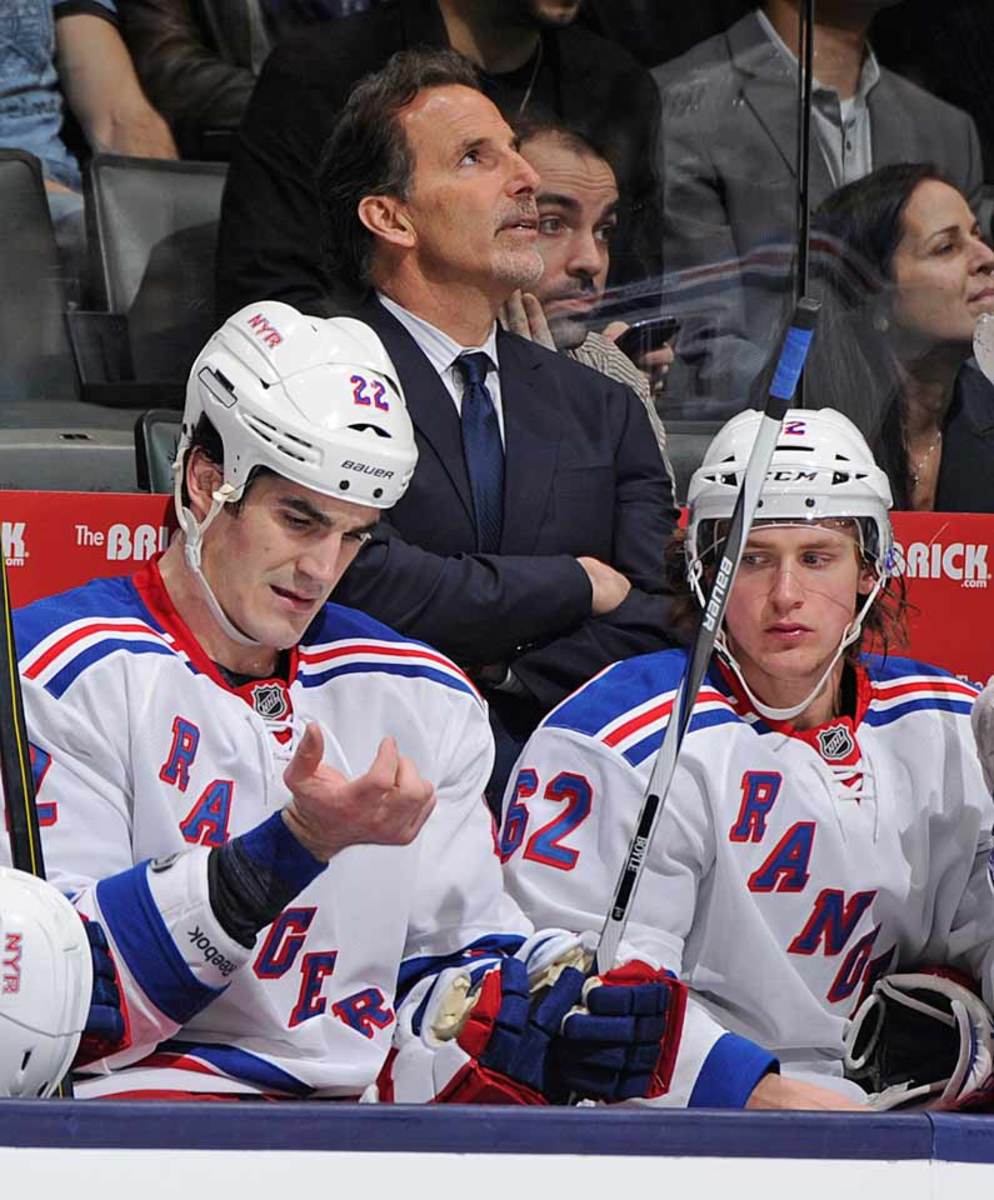
“I focus on the dumbness of [Carl] Hagelin … He played a hell of a game but that’s all washed off from dumbness.”—after his favorite whipping boy (62) drew a too-many-men penalty in a 2–1 win over the Flyers on Jan. 29, 2013. Also on Hagelin: “He stinks. I don't know why. I wish I could put him on the power play, but every time I put him on, he stinks.”—May 18, 2013
John Tortorella
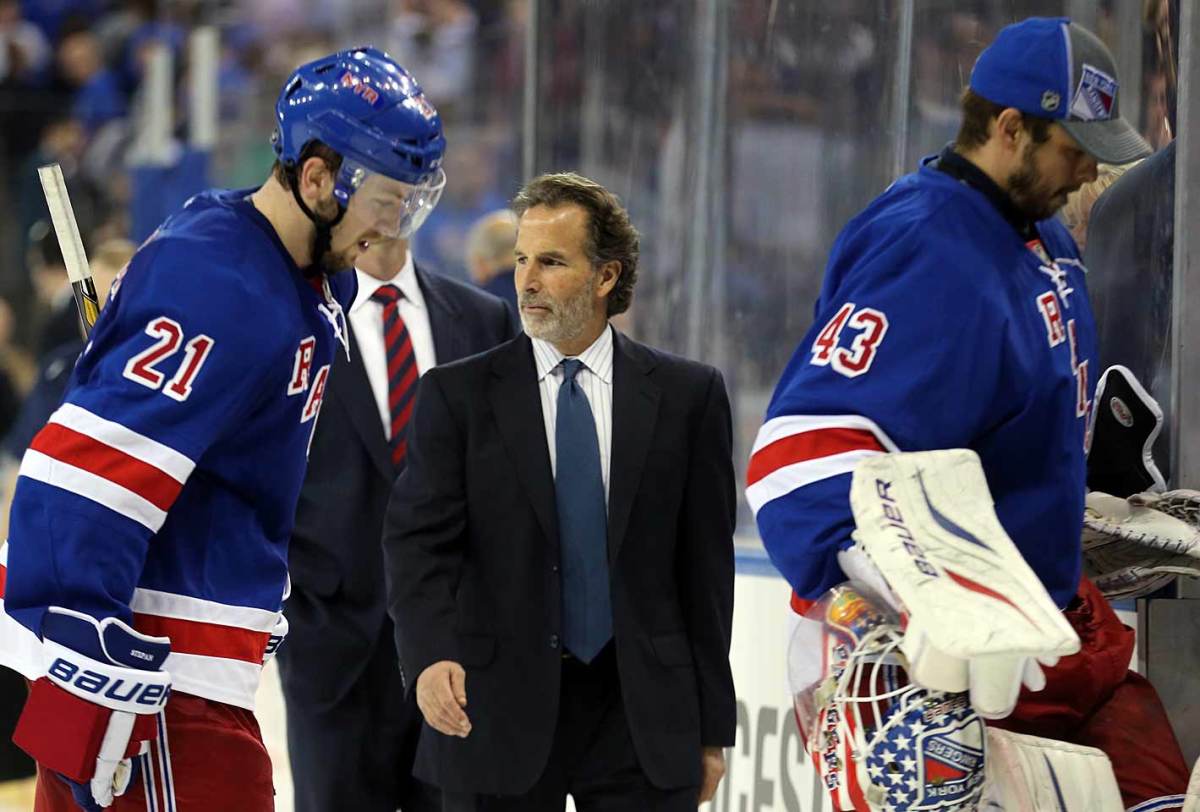
“We sucked from head to toe and we need to move by it.”— after his Rangers lost 2-0 to the Oilers on Oct. 22, 2011. Also: “We sucked, and we sucked at a time that you can’t suck.”—after a 3-1 loss to the Sabres on March 12, 2013
Harry Neale
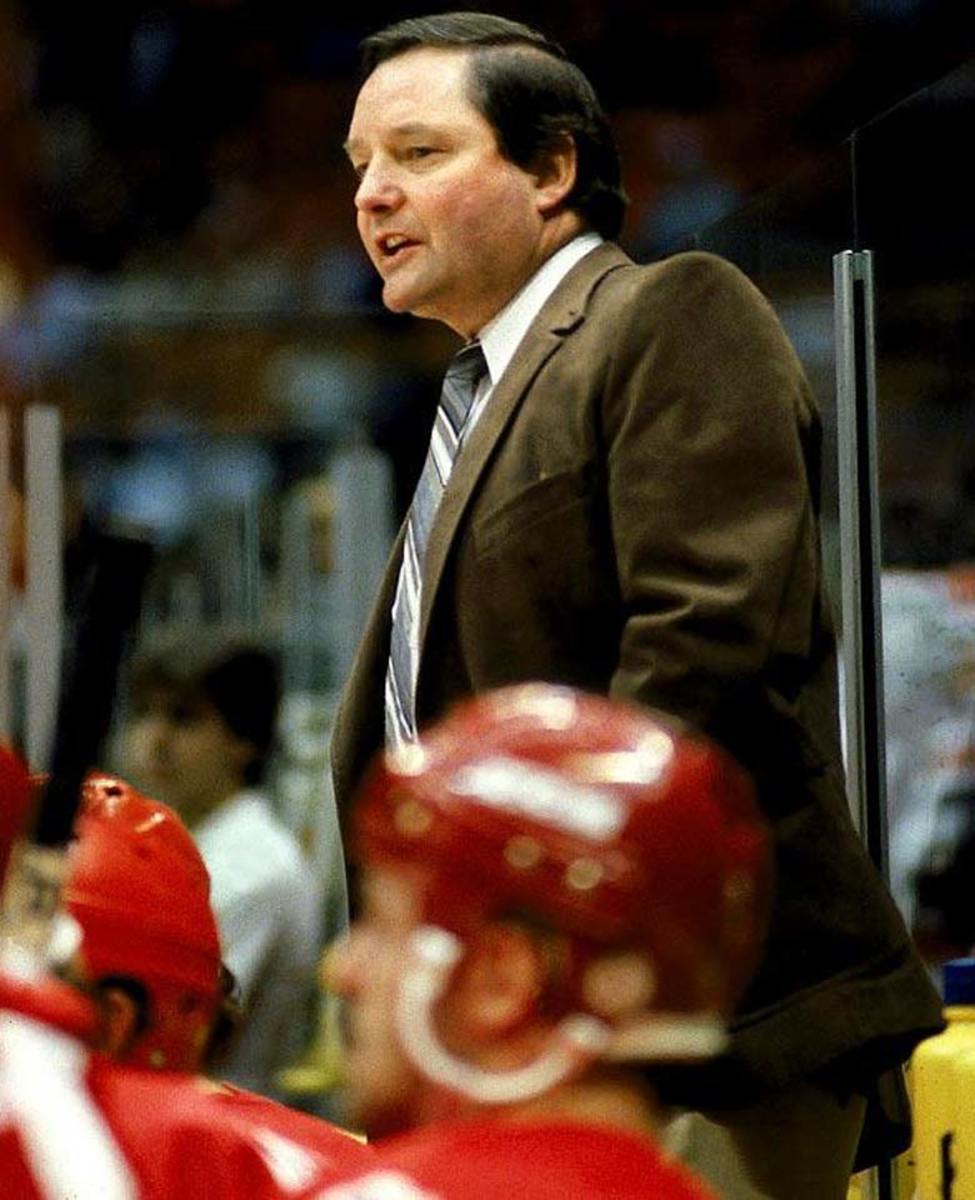
“I know my players don’t like my practices, but that’s OK because I don’t like their games.”—on his Canucks after a loss during the 1981–82 season. Also: “Last season we couldn’t win at home and we were losing on the road. My failure was that I couldn’t think of any place else to play.” Also: “Our system of forechecking is to shoot the puck and leave it there.”
Don Cherry
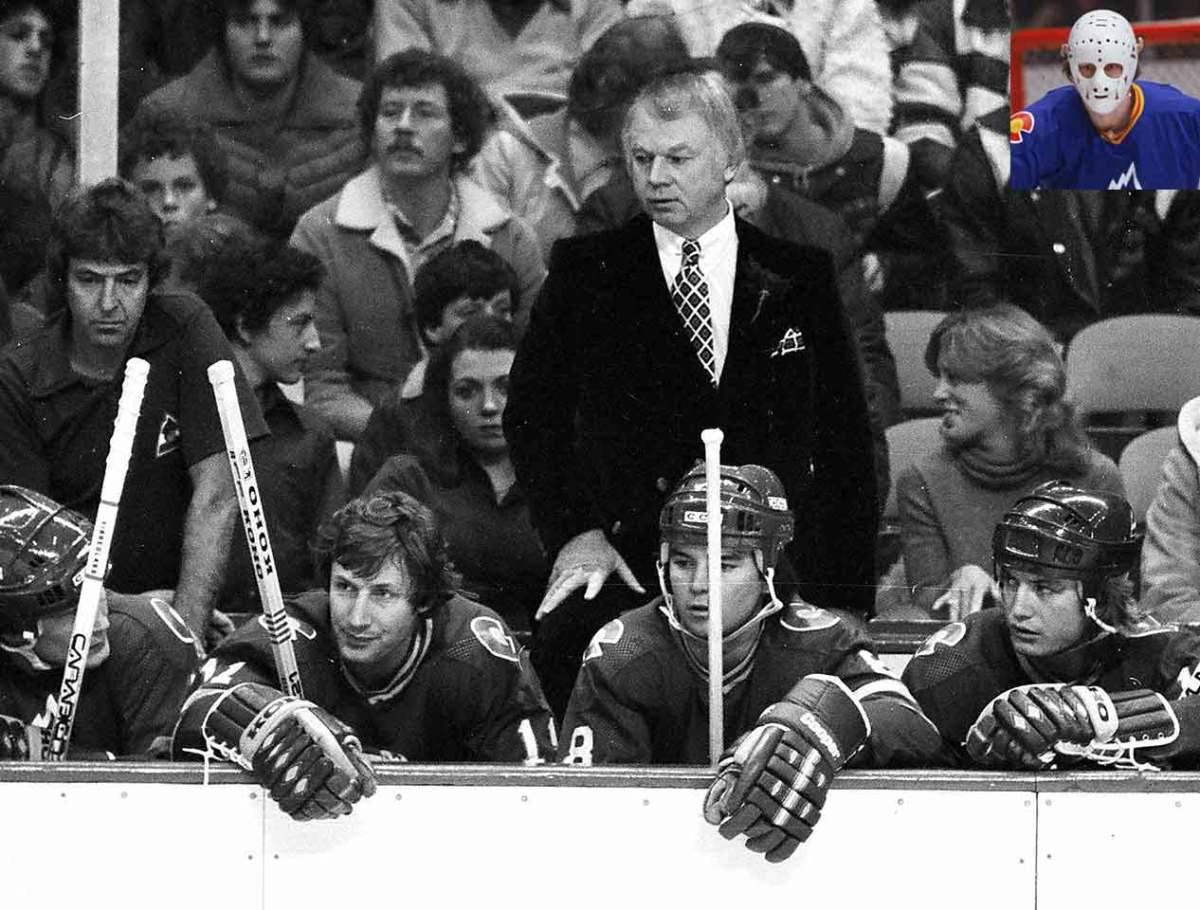
“Once, during a practice, Bobby Schmautz tested [goalie Hardy] Astrom with four shots from the blue line. Each one of them went right along the ice and beat Astrom. I doubt that my wife, Rose, would have missed more than two of them!”—on Colorado Rockies starter Hardy Astrom in 1979-80
Terry Crisp
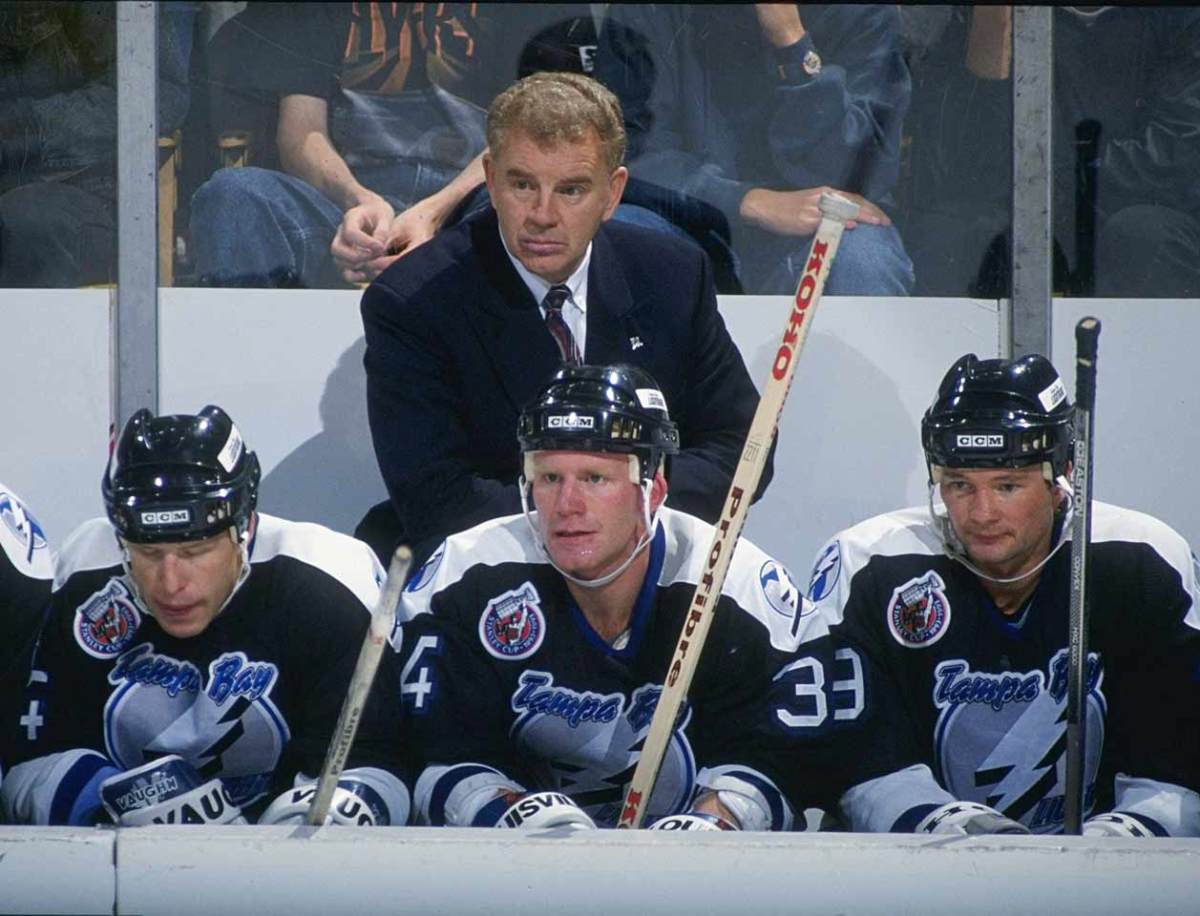
“The only difference between this and Custer’s last stand was that Custer didn’t have to look at the tape afterward.”—after his Lightning’s particularly ugly 10-0 blowout loss to the Penguins on Nov. 1, 1995. Also: “If our goalies were in a divorce case they could sue for lack of support and be millionaires tomorrow.”
Ron Wilson
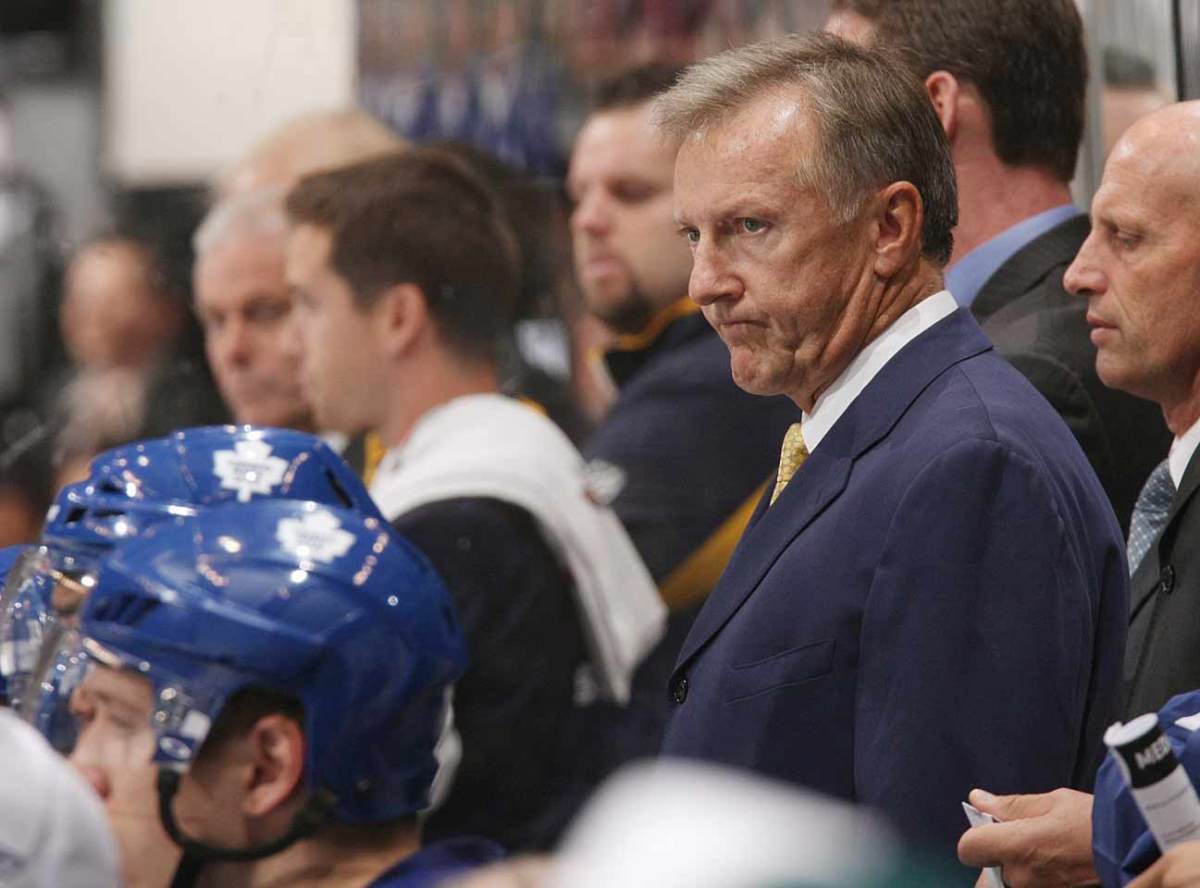
“We're not going to win the Stanley Cup this year. There’s a news flash for you.”—on his Maple Leafs after an exhibition game in September 2008
John Brophy
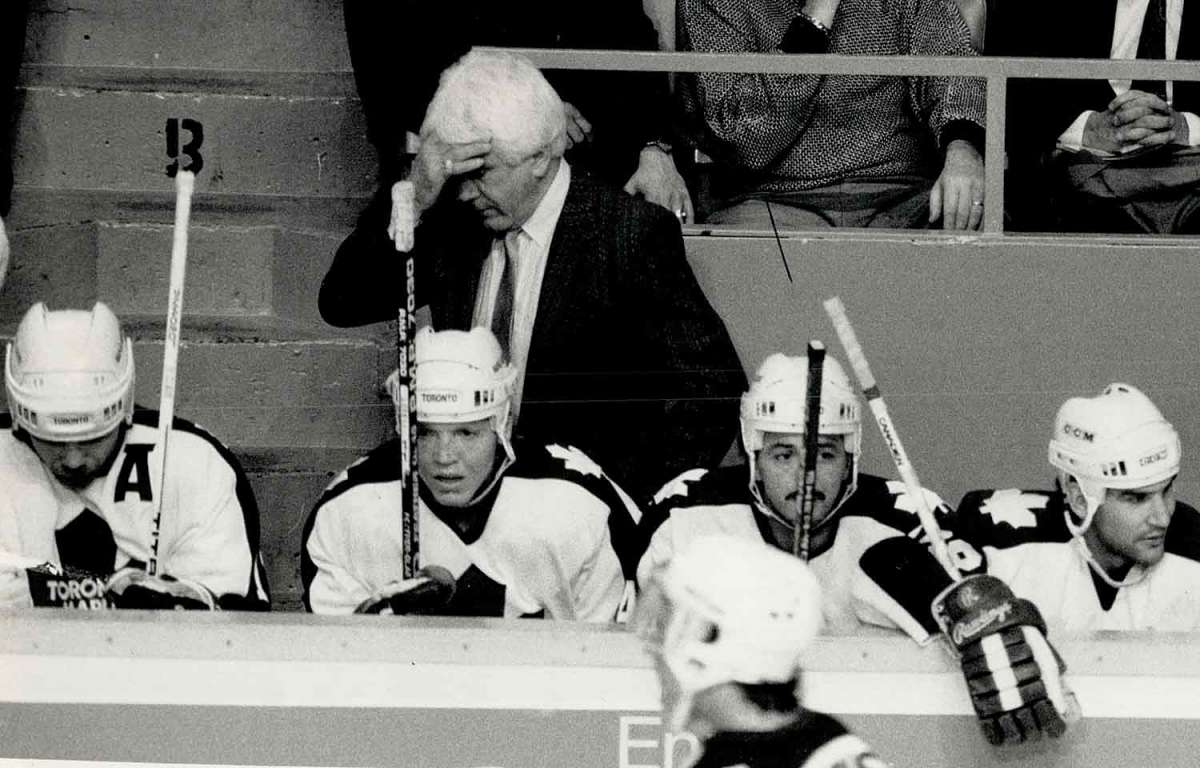
“It’s a disgrace, I’m sick and f-----’ tired of makin’ excuses for all these f-----’ guys that’s gettin’ paid on this f-----’ hockey club, blamin’ it on someone else all the f-----’ time. Who are these f-----’ people who drag that f-----’ uniform through the f-----’ mud? For Christ’s sake, there have been great players play in the thing, and then [they] act like this here. Who are they? It’s embarrassing. It’s f-----’ embarrassing.”—part of Brophy’s rant—which included 72 f-bombs—about his Maple Leafs in 1988.
Mike Milbury
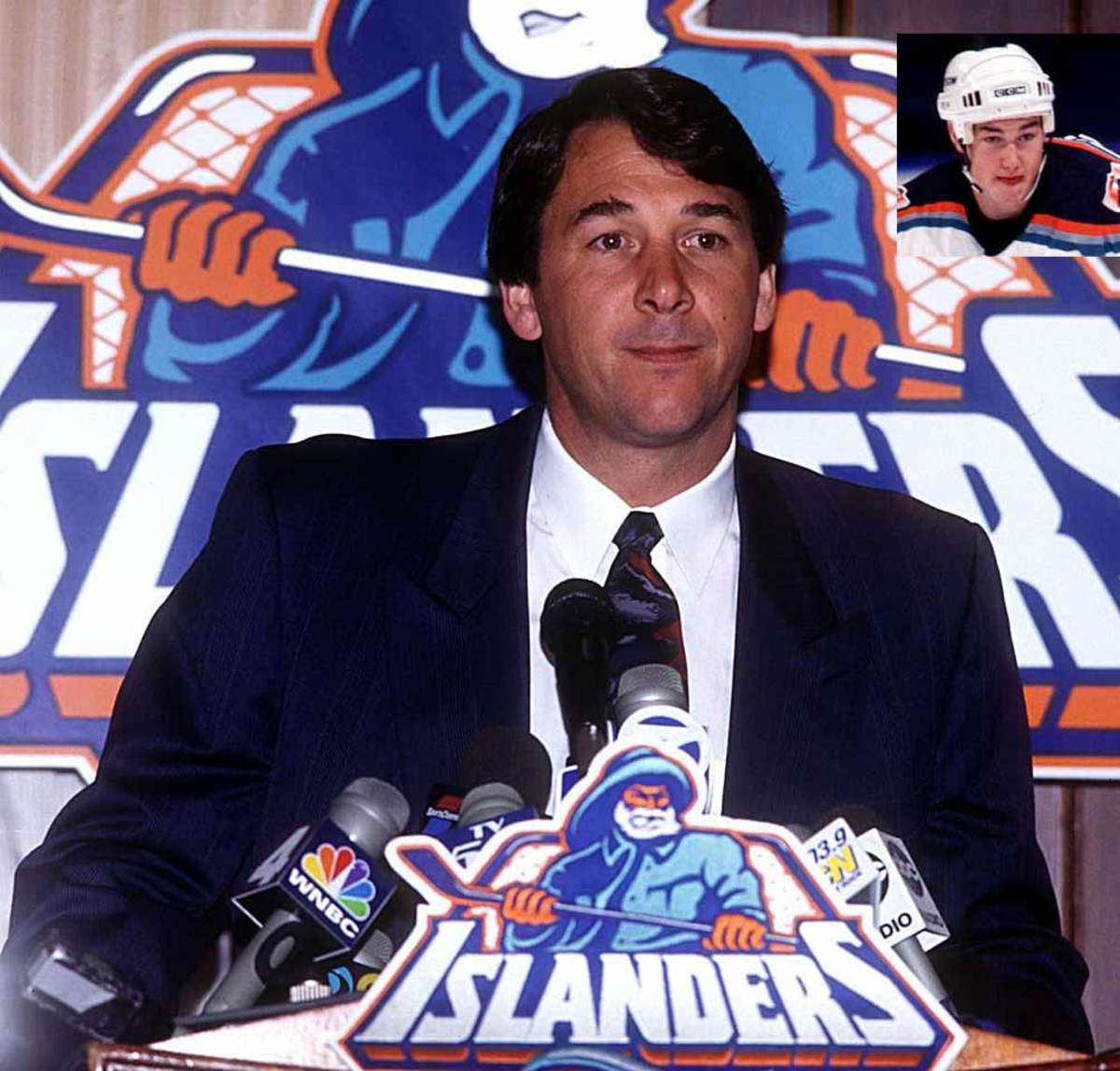
“The kid’s playing like he’s sniffing glue.”—on Islanders defenseman Eric Brewer (inset) in 1998.
Ted Nolan
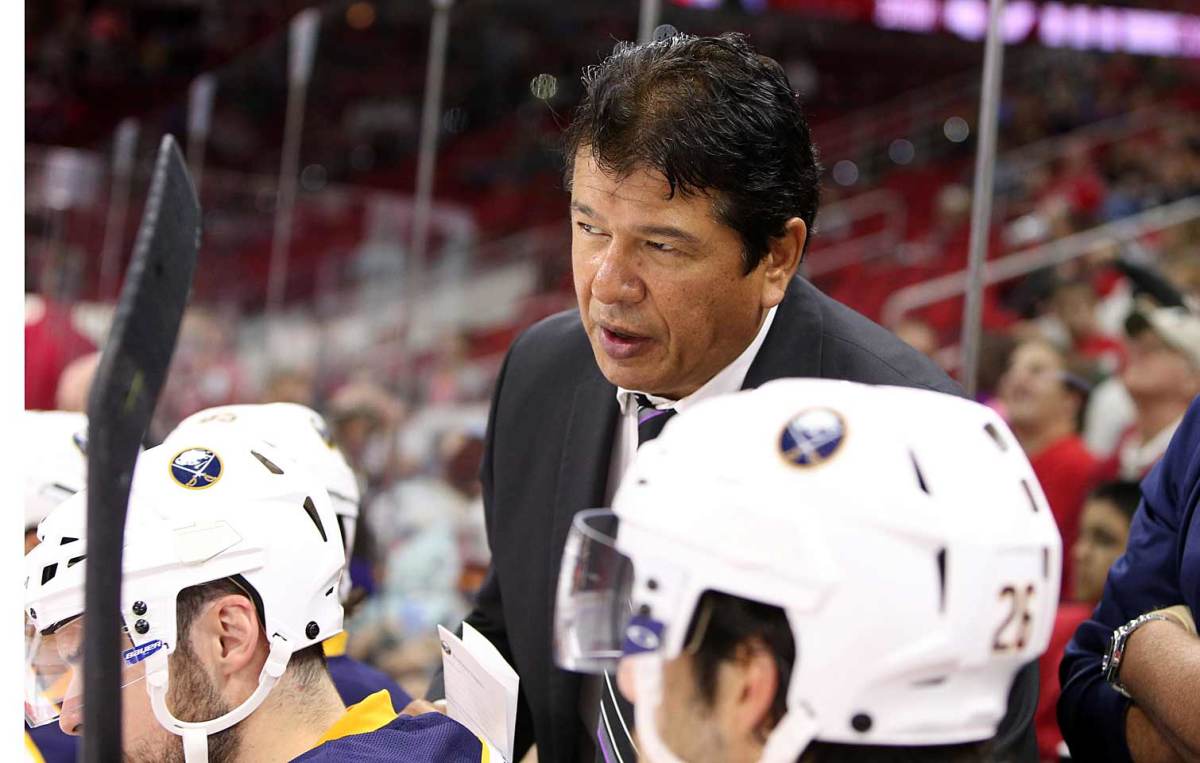
“That was like an NHL team playing against a pee wee team. They dominated us from start to finish. They did all the right things and everything that we could do wrong, we did wrong.”—after his Sabres were outshot 44–12 in a 5–1 loss to the Ducks on Oct. 13, 2014.
Mike Keenan
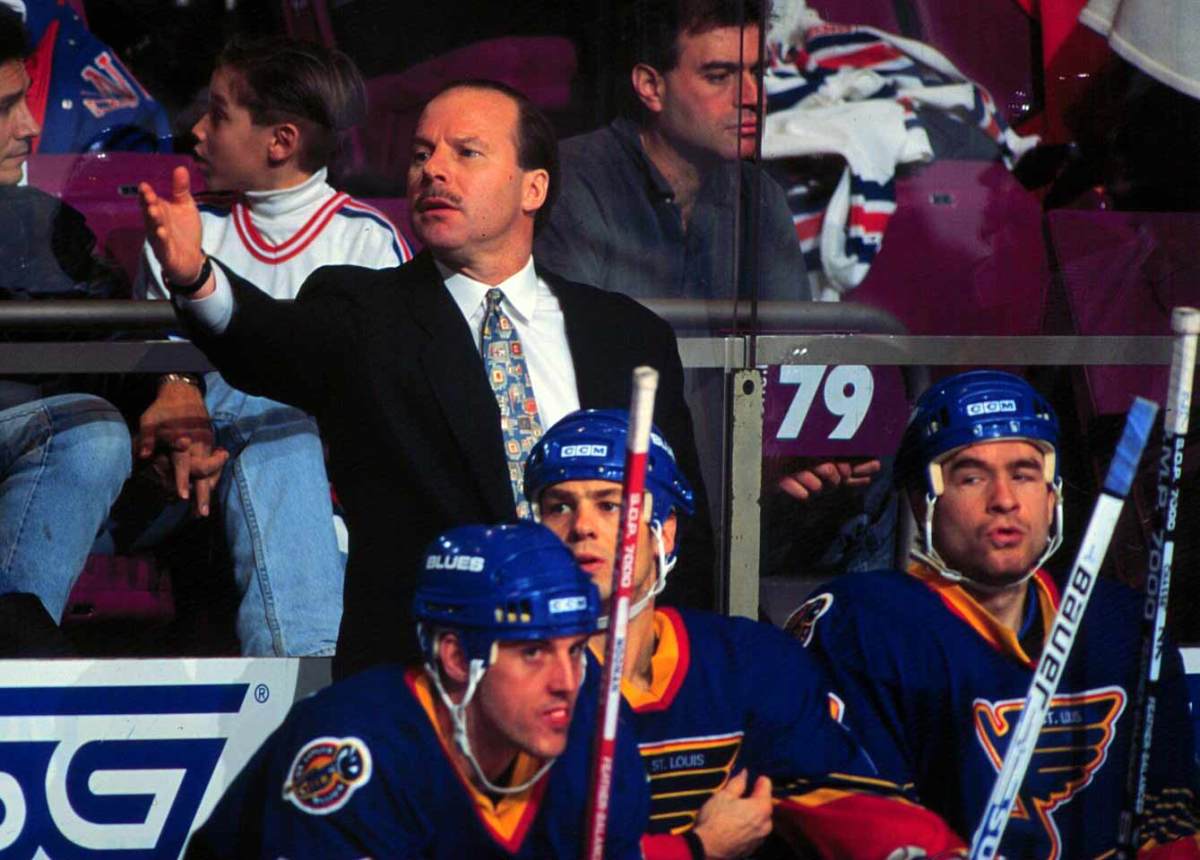
“They're standing around and looking at each other, saying, 'We've got a hell of a lot of talent so we don't have to work.’ ”—about his Blues, April 1995
